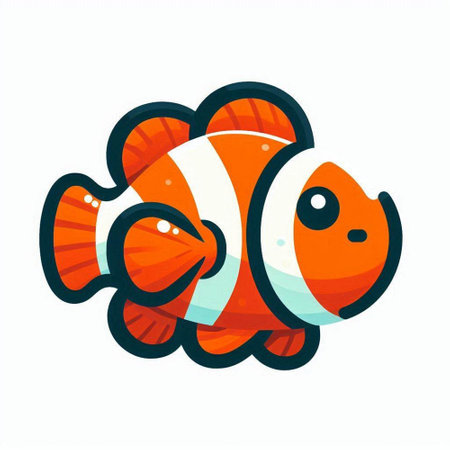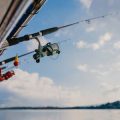1. Historical Context of Female Angling in Britain
To truly appreciate the contemporary impact of female participation in British coarse and game fishing, it’s essential to delve into its historical tapestry. Traditionally, angling in Britain has been depicted as a distinctly masculine pursuit—an image reinforced by classic literature such as Izaak Walton’s The Compleat Angler, where fishing is painted as a gentleman’s leisure, steeped in pastoral reflection and camaraderie. Yet, beneath these well-worn pages lies a quieter narrative of women who have cast their lines alongside men, albeit often from the margins.
During the Victorian era, societal expectations and rigid gender roles largely confined women to spectatorship or passive involvement; however, notable exceptions began to emerge. Figures such as Dame Juliana Berners, whose fifteenth-century treatise on fishing is one of the earliest known angling texts, reveal that women have long contributed to the sport’s literary and practical traditions. In rural communities, especially across the chalk streams of southern England and the wild rivers of Scotland, women would frequently join family outings or manage estate fisheries, subtly shaping local angling customs.
Despite these early contributions, mainstream acceptance was slow to follow. Angling clubs and competitions remained predominantly male domains well into the twentieth century, reflecting broader societal norms that limited women’s access to outdoor pursuits. Still, incremental changes began to ripple through the sport as Britain’s social landscape evolved. The rise of women’s suffrage and increased mobility after both World Wars opened new opportunities for female anglers, sowing the seeds for today’s more inclusive scene.
This rich history underscores how female participation—though historically under-acknowledged—has always been woven into the fabric of British coarse and game fishing. By tracing these shifts through literature, tradition, and social change, we gain a clearer understanding of how women’s evolving roles have challenged conventions and begun to redefine what it means to be an angler on British waters.
Shifting Gender Dynamics at the Waterside
The growing presence of women in British coarse and game fishing has brought about a noticeable transformation within angling communities, tackle shops, and club memberships across the UK. Traditionally seen as a male-dominated pastime, the banks of rivers and lakes are now witnessing more diverse participation, reshaping the social fabric of these spaces.
Angling communities have become more inclusive as female anglers introduce fresh perspectives and foster a welcoming atmosphere. This shift is apparent at local watersides, where mixed-gender groups share knowledge about tactics, bait selection, and seasonal changes in fish behaviour. The camaraderie between anglers is richer and conversations now often extend beyond fishing to topics such as environmental stewardship and family-friendly access to waters.
Tackle shops have responded proactively to this demographic evolution. Owners report a marked increase in demand for equipment tailored to women, including lighter rods, ergonomic clothing, and stylish yet functional accessories. Staff training has evolved too, with an emphasis on knowledgeable advice for all customers regardless of experience or gender. The following table illustrates some key changes observed by tackle shop owners:
| Aspect | Before Increased Female Participation | After Increased Female Participation |
|---|---|---|
| Product Range | Mainly unisex or male-oriented gear | More female-specific apparel & equipment |
| Customer Engagement | Predominantly male clientele | Balanced mix of men and women; family shoppers |
| Shop Environment | Functional layouts; limited amenities | Inviting spaces; community noticeboards; events for all ages |
Club memberships have also seen a dynamic shift. More women joining angling clubs has prompted committees to rethink their activities and outreach. Many clubs now run beginner workshops, social events, and junior programmes that appeal to families and new anglers alike. The broader membership base encourages more inclusive decision-making regarding facilities, competitions, and conservation efforts—ensuring everyone feels valued at the waterside.
This evolving landscape demonstrates how increased female participation is not just changing who fishes but how the entire angling experience is perceived and enjoyed throughout Britain.

3. Female Anglers and Conservation Ethos
Across Britain’s meandering rivers and tranquil lakes, the presence of women on the bank has brought a refreshing perspective to coarse and game fishing, especially in matters of conservation and environmental stewardship. Traditionally dominated by men, the angling community is now witnessing a noticeable shift as more female anglers embrace both rod and responsibility, knitting a deeper connection between fishing and the health of British waterways.
Women engaging in coarse and game fishing have often displayed a pronounced sensitivity to ecological balance. Their participation is closely linked with increased advocacy for sustainable practices—be it through selective catch-and-release approaches or active involvement in river clean-ups and habitat restoration projects. This mindful approach is helping to nurture a new generation of anglers who view their pastime not only as sport but as a means of safeguarding local flora and fauna.
Moreover, many women involved in angling clubs across the UK are at the forefront of educational initiatives, aiming to raise awareness about invasive species, water pollution, and biodiversity loss. By sharing knowledge and fostering community-led conservation schemes, female anglers are contributing substantially to grassroots movements that strive for cleaner waters and thriving fish populations.
This burgeoning conservation ethos among women is also reflected in their support for organisations like the Angling Trust and Wild Trout Trust. Whether organising litter picks along the Thames or participating in citizen science surveys on Scottish lochs, female anglers are helping to shape the dialogue around responsible fishing in Britain. Their holistic outlook often encourages fellow anglers to consider not just the thrill of the catch, but also their role as custodians of the countryside.
4. Economics and the Angling Industry
Women’s growing presence in British coarse and game fishing has reshaped the economic landscape of the angling sector in nuanced yet significant ways. The influx of female anglers has stimulated demand for a broader range of equipment, apparel, and services, prompting manufacturers and retailers to rethink both design and marketing strategies. Where once tackle shops and brands catered predominantly to male preferences—prioritising ruggedness and traditional aesthetics—they now actively incorporate feedback from women, leading to more inclusive product lines.
Shifting Gear Preferences
Female participation has spurred innovation in angling gear. Companies are increasingly offering rods with lighter weights, ergonomic handles designed for smaller hands, and clothing ranges that blend practicality with style—without sacrificing performance in the field. This shift is not just about aesthetics; it reflects an understanding that diverse anglers require diverse solutions.
| Product Category | Traditional Focus | Post-Inclusion Focus |
|---|---|---|
| Fishing Rods | Heavier, longer models | Lighter, ergonomic options |
| Apparel | Standard sizing, muted colours | Inclusive sizing, varied styles |
| Tackle Boxes & Accessories | Bare functionality | User-friendly organisation |
| Marketing Imagery | Male-dominated visuals | Diverse representation |
Event Attendance and Economic Growth
The rise in female anglers has also been reflected at fisheries, local competitions, and national shows. Event organisers have reported increases in ticket sales and participant numbers as events become more welcoming to all genders. Many clubs now offer women’s leagues or inclusive team formats, further driving engagement and boosting revenue streams for venues and local businesses alike—from bait suppliers to nearby cafés.
Economic Impact Snapshot
| Area of Impact | Change Observed Since Increased Female Participation |
|---|---|
| Tackle Sales | +15% growth in gender-neutral/female-specific items (2019–2023) |
| Event Attendance | Average 10–12% annual increase in mixed-gender competitions |
| Memberships at Clubs | Greater renewal rates among families and young people |
| Sponsorship Opportunities | Larger brands investing in diverse representation campaigns |
A More Inclusive Market Landscape
This evolution has not only expanded market opportunities but also fostered a more welcoming community ethos within British angling. As women continue to influence the industry—from gear innovation to event participation—the economic benefits become a testament to the value of inclusivity in one of Britain’s most beloved countryside pursuits.
5. Case Studies: Stories from the Bank
Personal Journeys Along British Waters
From the quiet banks of the Hampshire Avon to the wild stretches of the Yorkshire Dales, British female anglers are leaving their mark with rod and reel. Take the story of Charlotte, a lifelong coarse angler from Lincolnshire, whose weekends are spent stalking chub along shaded stretches of her local canal. She speaks of the camaraderie found in small village angling clubs, where advice is shared over mugs of tea and the finest maggots are prized secrets. For Charlotte, fishing is not just about landing a catch—it’s about understanding the subtle movements of water and wildlife, tuning into nature’s rhythms, and appreciating moments of stillness.
Local Angling Clubs: Cultivating Community
Sophie, another passionate game angler from Devon, highlights the importance of inclusive local clubs. She recalls how joining her town’s fly-fishing association opened doors to mentorship and friendship rarely found elsewhere. Within these clubs, women are increasingly taking up committee roles and leading junior sessions, championing inclusivity and environmental stewardship. These grassroots communities foster practical learning—whether it’s tying a perfect clinch knot or reading a river’s flow for rising trout—and encourage new generations of female anglers to step confidently onto the bank.
The Subtle Art of Watercraft
Mastering watercraft—the art of interpreting water and its moods—is an essential skill for every angler, and British women are proving particularly adept. Anna, a regular at Loch Lomond’s windswept shores, describes how patience, careful observation, and a gentle approach yield results even on challenging days. Her accounts reveal an intimate connection with place: listening for the flicker of dace beneath lilies or watching kingfishers dart through morning mist. Through these stories, it becomes clear that female participation is not only enriching Britain’s fishing culture but also elevating its appreciation for the natural world.
6. Challenges and Future Opportunities
While the presence of women on British riverbanks and lakesides has certainly grown, several hurdles remain for female anglers in both coarse and game fishing. Traditional perceptions of angling as a male-dominated pursuit still linger, sometimes manifesting as subtle gatekeeping or a lack of representation in clubs, competitions, and tackle shops. Access to facilities such as safe changing areas and toilets, especially in more rural or remote spots, can be limited—an issue that disproportionately affects women and families keen to enjoy the sport together. There’s also a lingering deficit in tailored mentorship and networking opportunities for women, which are crucial for skill development and fostering a sense of community.
Ongoing Barriers
Many female anglers continue to encounter outdated attitudes or casual stereotyping, whether from fellow fishers or within popular angling media. Equipment design also remains an area needing attention, with much tackle and clothing still not adequately suited to female physiques or preferences. Furthermore, the competitive angling scene is only beginning to embrace mixed-gender events or ensure equitable prize structures and recognition for women’s achievements.
Emerging Initiatives
Despite these challenges, a wave of positive change is underway. Charities like ‘Get Fishing’ and the Angling Trust have launched programmes specifically aimed at encouraging girls and women onto the water, while local clubs increasingly host women-only taster days and workshops. Social media networks now help connect female anglers across Britain, allowing them to share advice, organise meet-ups, and offer mutual support. Some forward-thinking brands are collaborating with leading female anglers to develop kit designed with women in mind—from rods to waders to technical outerwear.
Visions for a More Inclusive Future
The vision ahead is one where British angling fully reflects the diversity of its enthusiasts. This means not only increasing participation but also amplifying women’s voices in decision-making roles throughout the sport—from club leadership to conservation initiatives. With continued investment in education, infrastructure, and outreach programmes—and by celebrating role models who exemplify both skill and stewardship—the future of British coarse and game fishing looks richer, more dynamic, and truly welcoming for all who love the water’s edge.

